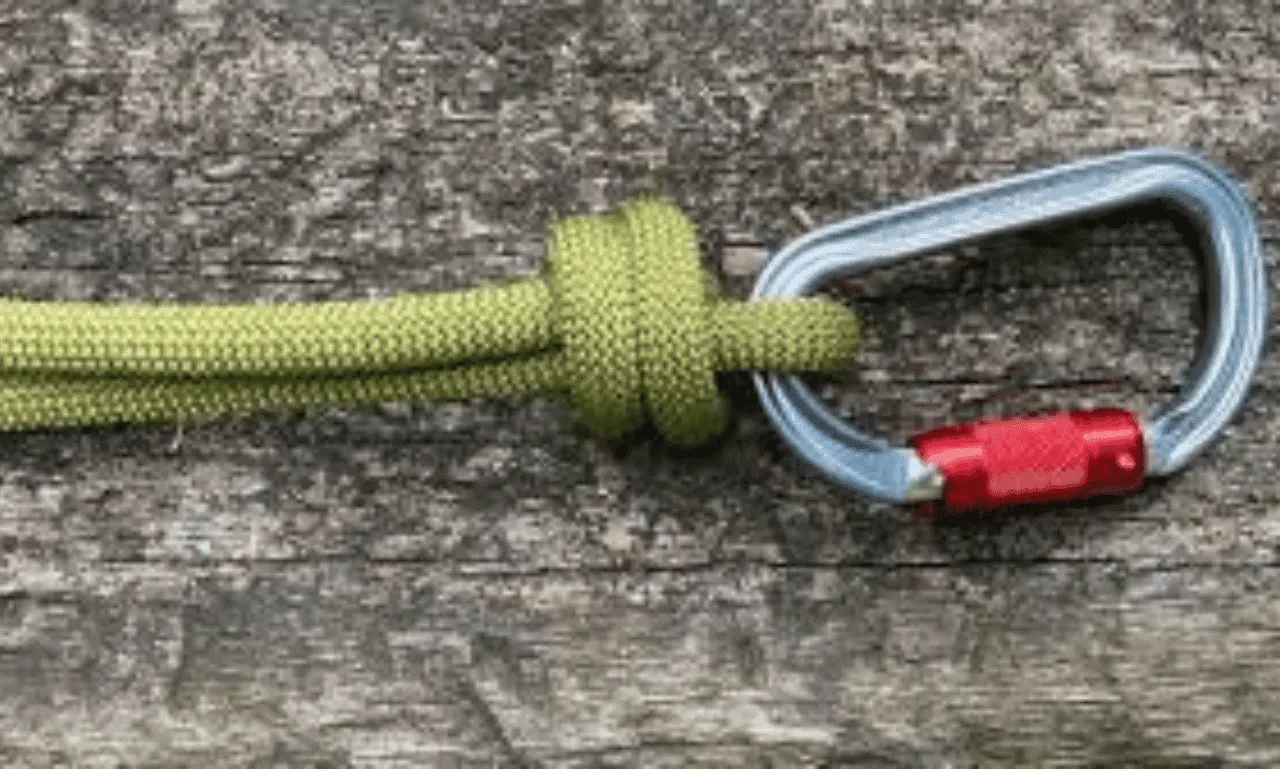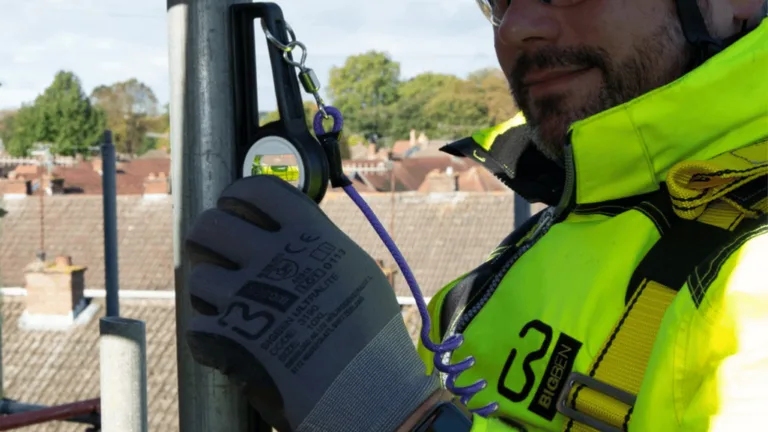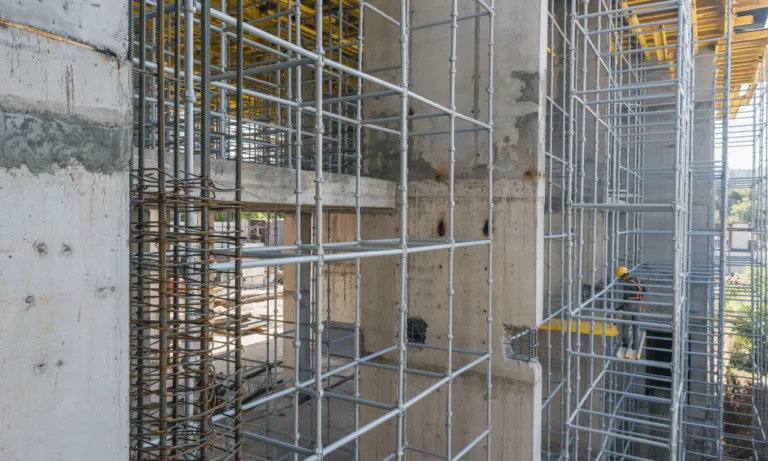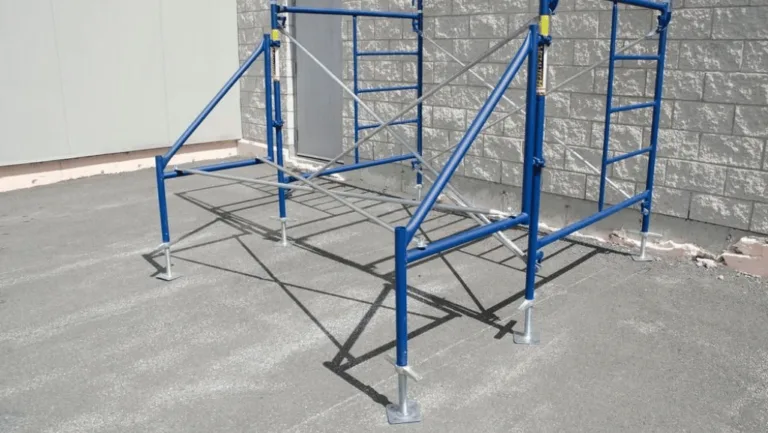Phone:
(+65)8319-0742
In the construction industry, safety is paramount. When it comes to securing scaffolding, one knot stands above the rest – the Scaffold Knot. Tying this knot correctly is essential for ensuring the stability and safety of scaffolding structures, making it a crucial skill for construction workers.
In this section, we will provide you with a step-by-step guide on how to tie the Scaffold Knot effectively and safely. From understanding its importance to learning the right techniques, we’ve got you covered. By the end of this guide, you’ll be able to master the Scaffold Knot with confidence, enhancing your ability to create secure scaffolding systems.
Key Takeaways:
- The Scaffold Knot is vital for securing scaffolding in construction projects.
- Mastering the Scaffold Knot ensures the structural integrity of scaffolding systems.
- Our step-by-step guide will help you tie the Scaffold Knot effectively and securely.
- Don’t overlook the importance of using the right techniques for a tight and stable knot.
- By avoiding common mistakes and following best practices, you can enhance the safety of your scaffolding.
Understanding the Scaffold Knot
Before we dive into the details of tying the Scaffold Knot, let’s explore its importance in construction. The Scaffold Knot is specifically designed for securing scaffolding, providing stability and safety to workers. Mastering this knot is crucial to ensure the structural integrity of scaffolding systems.
When it comes to constructing temporary structures like scaffolding, the utmost care must be taken to ensure stability and safety. The Scaffold Knot plays a vital role in achieving this objective. By securely fastening ropes or ties, the Scaffold Knot provides the necessary support and stability that is essential for scaffolding structures.
The Scaffold Knot is commonly used due to its specific properties that make it well-suited for construction applications. It offers excellent resistance to slippage, making it ideal for supporting heavy loads. The knot’s tightness and reliability ensure that scaffolding remains secure even during external forces like wind or vibrations.
Constructing scaffolding involves multiple elements, and the Scaffold Knot serves as a crucial connection point for various ropes, ties, and other components. This knot acts as a strong and dependable link, ensuring that the scaffolding system remains intact and safe for workers to use.
Understanding the fundamentals of the Scaffold Knot is essential for anyone involved in construction or scaffolding work. It empowers individuals to contribute to the overall safety and stability of scaffolding systems. In the following sections, we will delve deeper into the step-by-step process of tying the Scaffold Knot and explore best practices to enhance its effectiveness.
| Scaffold Knot | Key Features |
|---|---|
| Secure and stable | Ensures the safety of scaffolding structures |
| Resistance to slippage | Provides reliability under heavy loads |
| Strong connection point | Ensures the integrity of scaffolding systems |
Step-by-Step Guide to Tying a Scaffold Knot
If you’re looking to master the art of knot tying, understanding how to tie a Scaffold Knot is essential. This knot is widely used in construction projects to secure scaffolding structures with utmost stability and safety. In this step-by-step guide, we will walk you through the process of tying a Scaffold Knot, providing you with the necessary techniques and best practices.
Follow these instructions carefully to ensure you are tying the Scaffold Knot accurately and securely:
- Step 1: Start by crossing the two ends of your rope, forming an “X” shape.
- Step 2: Take the right end of the rope and pass it over the left end, creating a loop with the right end of the rope.
- Step 3: Bring the right end of the rope behind the “X” shape, passing it through the loop created in the previous step.
- Step 4: Hold on to both ends of the rope and tighten the knot by pulling them simultaneously. Ensure the knot is snug and secure.
- Step 5: Your Scaffold Knot is now complete. Double-check that it is tight and properly secured before using it to secure scaffolding.
Best Practices for Tying a Scaffold Knot:
While the steps mentioned above will guide you in tying a Scaffold Knot, it’s important to follow these best practices to ensure a secure knot:
- Practice: Like any skill, practice is crucial. Take the time to practice tying the Scaffold Knot to build muscle memory and increase your speed and accuracy.
- Use quality rope: Choose a sturdy and reliable rope for tying the Scaffold Knot. The rope should have sufficient strength to withstand the weight and pressure of the scaffolding structure.
- Inspect the knot: Before relying on the Scaffold Knot to secure scaffolding, always inspect the knot for any signs of weakness, slippage, or imperfections. This will help you identify and correct any issues before they compromise the safety of the structure.
- Secure loose ends: After tying the Scaffold Knot, ensure you secure any loose ends of the rope to prevent accidental tripping hazards or entanglements.
With this step-by-step guide and best practices in mind, you’re now equipped with the knowledge required to tie a proper Scaffold Knot. Remember, safety should always be the top priority when working with scaffolding, and a properly tied Scaffold Knot is the first step towards ensuring a secure and stable structure.
Tips for Tying a Secure Scaffold Knot

Tying a secure Scaffold Knot is essential for the safety and stability of any scaffolding structure. To ensure the knot’s tightness and prevent any potential loosening or slippage, it is important to pay attention to detail and employ specific knot techniques. Here are some essential tips to keep in mind when tying a Scaffold Knot:
- Choose the right rope: Select a high-quality and appropriate rope for the Scaffold Knot. The rope should have sufficient strength and durability to withstand the weight and stress exerted on the scaffolding.
- Properly grip the rope: When starting the knot, ensure a firm grip on the rope. This will help maintain control and prevent the knot from unraveling prematurely.
- Follow a consistent tightening method: Consistency is key when tightening the Scaffold Knot. Whether you use a clockwise or anticlockwise motion, make sure to maintain the same direction throughout the knot tying process.
- Create firm and tight loops: As you progress with tying the knot, make each loop as tight as possible. This will ensure a strong and secure Scaffold Knot, minimizing the risk of accidental slippage.
- Apply appropriate friction: Use friction to your advantage when tying the Scaffold Knot. Apply pressure between the rope strands to enhance the knot’s grip and stability.
- Perform a final safety check: Once the Scaffold Knot is complete, thoroughly inspect the knot for any looseness or imperfections. Carefully tug on the rope to ensure the knot holds firm before using the scaffolding.
By following these essential tips and techniques, you can tie a secure Scaffold Knot that withstands the demands of construction projects. Practice these guidelines to enhance the safety and reliability of scaffolding structures.
Common Mistakes to Avoid when Tying a Scaffold Knot
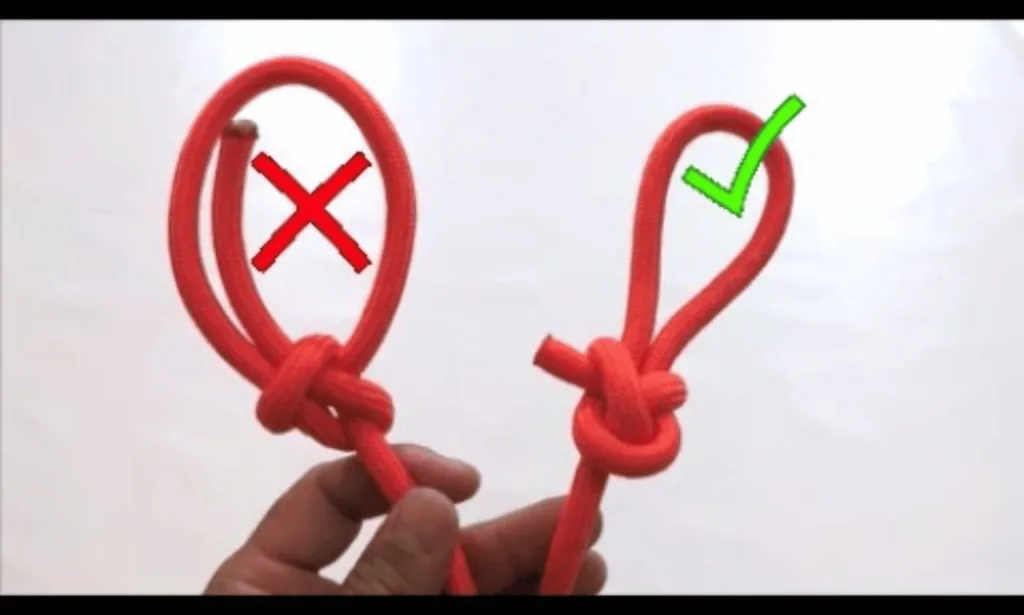
Tying a Scaffold Knot might seem straightforward, but even experienced individuals can make mistakes during the process. To ensure the safety and effectiveness of your Scaffold Knot, it’s crucial to be aware of and avoid these common errors.
1. Insufficient Wraps
One of the most common mistakes when tying a Scaffold Knot is not using enough wraps. The number of wraps determines the knot’s strength and stability, so make sure to follow the recommended guidelines for your specific application. Insufficient wraps can weaken the knot and increase the risk of it coming undone.
2. Incorrect Tension
Another mistake to avoid is tying the Scaffold Knot with incorrect tension. If the knot is too loose, it may slip or unravel easily. On the other hand, if the knot is overly tight, it can put excessive strain on the rope, potentially leading to premature failure. Achieving the right balance of tension is vital for a secure Scaffold Knot.
3. Inadequate Friction
Proper friction between the rope and the wraps is essential for a reliable Scaffold Knot. Failing to create enough friction can cause the knot to slip, compromising its integrity and putting workers at risk. Take the time to ensure that each wrap is snugly tightened and properly secured for optimal performance.
4. Rushing the Knot Tying Process
Attempting to tie a Scaffold Knot quickly or rushing through the process can significantly increase the chance of making mistakes. Take your time and be meticulous in each step to ensure the knot’s accuracy and effectiveness. Remember that your safety and the stability of the scaffold depend on a well-executed knot.
5. Neglecting Knot Inspection
After tying a Scaffold Knot, it’s essential to inspect it thoroughly. Neglecting this step can lead to missed errors or weak points that could compromise the knot’s integrity. Check for any loose wraps, tangled sections, or signs of improper tension. If any issues are detected, untie the knot and re-tie it correctly.
Avoiding these common mistakes will significantly enhance your ability to tie a secure and reliable Scaffold Knot. By paying attention to detail and following best practices, you can minimize the risk of accidents and ensure the safety of your scaffolding structure.
Alternative Knots for Scaffolding Applications
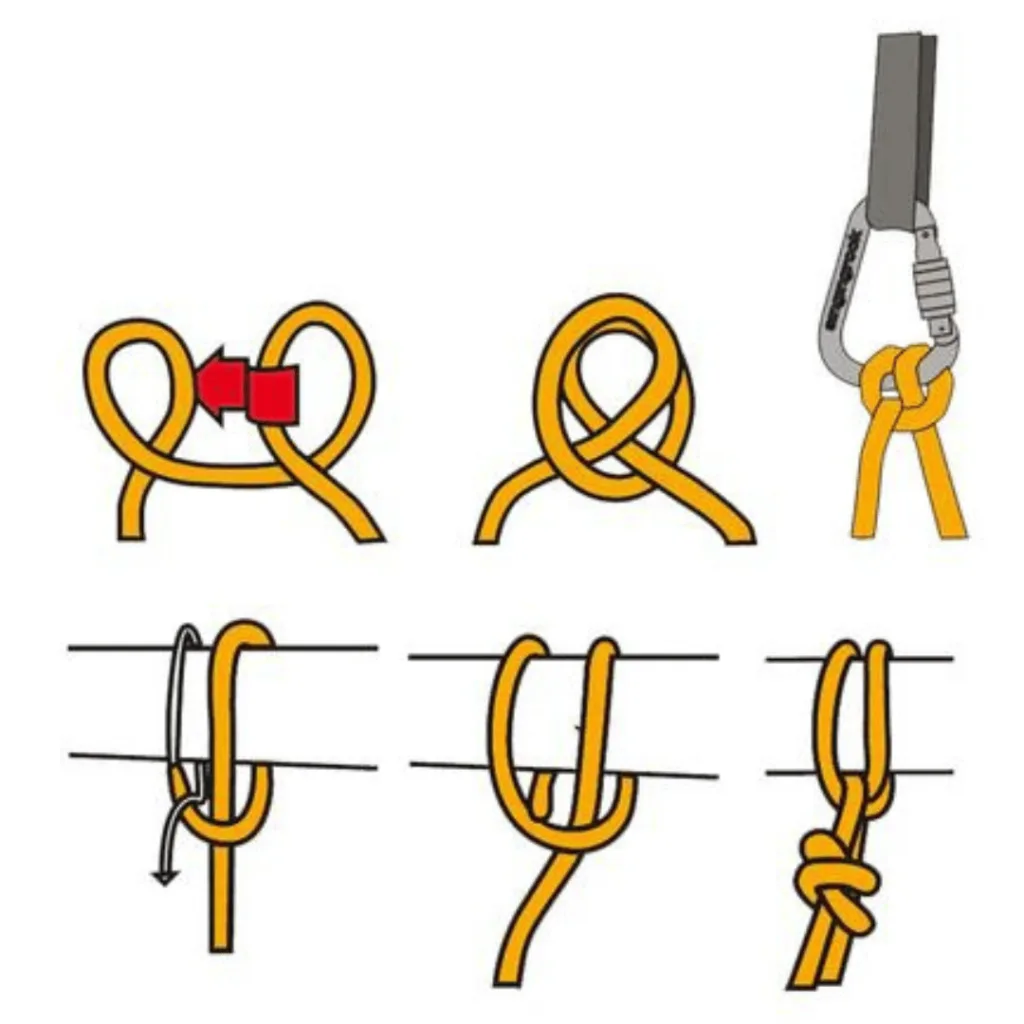
While the Scaffold Knot is widely used in construction, there are alternative knots that can be suitable for specific scaffolding applications. These alternative knots provide flexibility and adaptability to different requirements, allowing workers to choose the most appropriate knot for each situation.
Here are a few alternative knots commonly used in scaffolding:
The Square Knot:
The Square Knot, also known as the Reef Knot, is a simple yet effective knot for joining two ropes of equal diameter. It is commonly used in scaffolding to secure lighter loads, such as ropes used for lifting or tying off equipment. The Square Knot is quick to tie and untie, making it a convenient choice for various scaffolding tasks.
The Clove Hitch:
The Clove Hitch is a versatile knot that can be easily adjusted and secured around cylindrical objects, such as poles or scaffold tubes. It provides a reliable grip and is commonly used to attach ropes to scaffolding structures or to tie off scaffold planks. The Clove Hitch offers quick and convenient attachment, making it an efficient knot for scaffolding applications.
The Figure Eight Knot:
The Figure Eight Knot is a strong and secure knot that is commonly used in climbing and rigging. It provides a stable loop that can be easily attached to scaffolding hooks or anchor points. The Figure Eight Knot is often used in situations where a reliable and secure attachment is crucial, such as when securing heavy loads or providing fall protection.
These alternative knots offer additional options for scaffolding applications, allowing workers to choose the most suitable knot for the task at hand. It is important to note that the selection of the knot should be based on the specific requirements of the job, considering factors such as load capacity, ease of tying and untying, and overall safety.
By diversifying their knot repertoire, scaffolding professionals can enhance their skills and adaptability in different scenarios, ensuring efficient and secure construction practices.
Best Practices for Rope Tying in Scaffolding
When working with scaffolding, mastering rope tying techniques is crucial for ensuring overall stability and safety. Here are some best practices to follow:
1. Choose the Right Rope
Start by selecting a high-quality rope that can withstand the weight and pressure of scaffolding. Look for ropes specifically designed for construction and ensure they meet industry standards for strength and durability. Using the appropriate rope will enhance the effectiveness of your knot tying.
2. Learn Construction Knots
Acquiring knowledge of various construction knots is essential for securing scaffolding properly. Familiarize yourself with knots like the Scaffold Knot, Clove Hitch, and Bowline Knot, as they are commonly used in scaffolding applications. Practice tying these knots until you can execute them confidently and efficiently.
3. Understand Load-Bearing Capacity
Before starting any scaffolding project, it is crucial to determine the load-bearing capacity of the ropes and knots. Ensure that the rope and knot combination you use can support the expected weight without compromising safety. Always follow manufacturer guidelines and consult with experienced professionals if needed.
4. Properly Position Ropes
When securing scaffolding with ropes, ensure they are positioned correctly. Ropes should be strategically placed to provide equal tension and support across the structure. Avoid crossing ropes to prevent unnecessary strain, and make sure they are not in contact with sharp objects that can cause damage.
5. Maintain Consistent Tension
Consistent tension is essential for maintaining the stability of a scaffolding structure. After tying a knot, check the tension regularly to ensure it remains secure. Adjust the tension if necessary to prevent any loosening or slippage. Regular inspections and re-tightening of the ropes will help maintain the overall stability of the scaffold.
6. Create Backup Systems
In critical scaffolding applications, consider implementing backup systems to further enhance safety. Backup systems can involve using multiple ropes or additional knots to provide redundancy and prevent catastrophic failures. Consult with professionals or safety experts to determine the appropriate backup systems needed for your specific scaffolding project.
By following these best practices for rope tying, you can contribute to the stability and security of scaffolding structures. Remember to always prioritize safety, utilize appropriate construction knots, and consult with experienced professionals when necessary.
Conclusion
In this comprehensive guide, we have covered the essential aspects of tying the Scaffold Knot for secure scaffolding. By mastering the Scaffold Knot and following best practices, you can contribute to a safer and more efficient construction environment.
The Scaffold Knot is a secure knot specifically designed for scaffolding applications. With proper technique and attention to detail, you can ensure the stability and safety of scaffolding structures. By prioritizing the security and stability of scaffolding, you create a secure working environment for construction workers.
Remember, tying knots for scaffolding requires precision and knowledge of the specific techniques associated with the Scaffold Knot. By understanding the variations of the Scaffold Knot and following the best practices we have discussed, you can confidently tie secure knots for your scaffolding needs.
FAQ
What is a Scaffold Knot?
The Scaffold Knot is a knot used in construction for securing scaffolding. It provides stability and prevents the scaffolding structure from shifting or coming apart.
Why is mastering the Scaffold Knot important?
Mastering the Scaffold Knot is crucial for construction workers to ensure the structural integrity and safety of scaffolding systems. It ensures that the scaffolding remains stable and secure throughout the project.
How do I tie a Scaffold Knot?
To tie a Scaffold Knot, follow these steps: 1) Pass one end of the rope over the top of the standing part. 2) Cross the working end over the standing part, creating a loop. 3) Pass the working end through the loop. 4) Tighten the knot by pulling both ends of the rope.
What are some tips for tying a secure Scaffold Knot?
To ensure a secure Scaffold Knot, consider the following tips: 1) Pull both ends of the rope tightly to eliminate any slack. 2) Check for any loose strands or twists and straighten them out. 3) Double-check the knot’s tightness to prevent any potential loosening over time.
What are common mistakes to avoid when tying a Scaffold Knot?
Common mistakes to avoid when tying a Scaffold Knot include: 1) Leaving slack in the knot, which can lead to instability. 2) Knotting the rope too tightly, making it difficult to untie later. 3) Failing to properly align and secure the ropes, compromising the knot’s integrity.
Are there alternative knots for scaffolding applications?
Yes, there are alternative knots that can be used for scaffolding applications, depending on the specific requirements. Some alternatives include the Clove Hitch, Bowline Knot, and Double Fisherman’s Knot. Each knot has its own advantages and may be more suitable for certain situations.
What best practices should I follow for rope tying in scaffolding?
When tying ropes for scaffolding, it is essential to: 1) Use high-quality ropes capable of supporting the expected load. 2) Inspect the ropes regularly for wear and tear. 3) Secure the ropes properly using appropriate knots, such as the Scaffold Knot or other recommended knots for scaffolding.
Can I rely solely on the Scaffold Knot for securing scaffolding?
While the Scaffold Knot is specifically designed for securing scaffolding, it is always recommended to follow industry best practices and regulations. This includes using additional securing methods, such as bracing and clamps, to enhance the overall stability and safety of the scaffolding structure.

